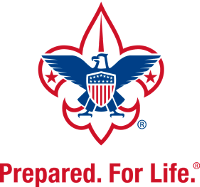Radiation Hazards
- Do the following:
- Tell what radiation is.
- Describe the hazards of radiation to humans, the environment, and wildlife. Explain the difference between radiation exposure and contamination. In your explanation, discuss the nature and magnitude of radiation risks to humans from nuclear power, medical radiation (e.g., chest or dental X-ray), and background radiation including radon. Explain the ALARA principle and measures required by law to minimize these risks.
- Describe the radiation hazard symbol and explain where it should be used. Tell why and how people must use radiation or radioactive materials carefully.
- Compare the amount of radiation exposure of a nuclear power plant worker to that of someone receiving a chest and dental X-ray
Exposure vs Contamination
To understand the risks associated with radiation, we need to understand the difference between exposure and contamination.
Exposure is when you are in the vicinity of a radiation source so that those alpha, beta, gamma (or other forms of) radiation strike your body.
Contamination is when the come into contact with the source of that radiation and end up with some of it on your body or clothing. Contamination results in extended exposure because, so long as you or your clothing is contaminate, you continue to be exposed to radiation. This alone makes it more serious, but in addition, some radiation sources are also chemical poisons; typically these are heavy metal poisons where the issue is that the metal takes the place of calcium in the bone marrow damaging the body's ability to produce blood cells.
Radiation Hazards
Because ionizing radiation has the ability to break chemical bonds, there are several potential health risks associated with exposure.
Small doses of radiation generally have unmeasurable health effects. While the general assumption used in assessing risk is called the Linear No-Threshold (LNT) assumption, at low doses actual effects are impossible to measure because of background radiation (radiation we receive from the environment due to naturally occuring radioisotopes in rocks, soil, foods, and even from space). By small, I mean doses below 0.01 Sv (sometimes referred to as 10 millirem)1.
Very high doses can cause death in a matter of hours or less. This is not cancer, but rather the radiation causes so much damage to the proteins in your cells that they can no longer repair themselves or even function normally.
In between, you can become sick, again because of the broken bonds in your cells' chemical machinery, as well as be at increased risk of cancer due to broken (and incorrectly repaired) damage to your DNA. There are no deliberate experiments on humans to assess the relationship between radiation dose and health effect for the obvious ethical reasons. Most of our information comes from long term monitoring of Hiroshima and Nagasaki residents23 or victims of other accidental exposures. In most cases, actual dose has to be estimated. However, there is more than enough data to confirm an overall roughly linear increase in cancer incidence with increased dose, at least about the smallest exposure levels.
ALARA - As Low As Reasonably Achievable
Why not zero exposure and contamination?
Simple: it's not possible. About 0.01% of the potassium in nature is the radioactive K40 isotope. If you like bananas, potatoes, kidney beans, sunflower seeds, and various nuts, you're eating some radioactive potassium. The amount is small and not considered a medical risk, after all, humans have been eating those foods for a very long time. But the amount is sufficient that a truckload of bananas can set off a false alarm at a nuclear material smuggling detection station4.
ALARA is the motivation for better X-ray machines, ones that can better image your interior while using less radiation. And ALARA is why the X-ray operator hides on the other side of the wall and puts a lead apron over you while getting a dental X-ray. You only get those X-rays once a year or so. But the operator has the opportunity to be exposed every day.
There are 7 principles for ALARA, three for reducing external exposure, four for reducing internal exposure.
External Exposure
- Time. The shorter the time you are in the vicinity of a radiation source, the lower your total exposure. Half the time, half the exposure.
- Distance. The further away you are from the radiation source, the lower your total exposure. This one follows the inverse square law; double the distance, quarter the exposure.
- Shielding. The more shielding between you and the source, the lower the total exposure. This one is trickier and depends on both the type of shielding and the type of radiation.
Think about those three things and what happens when you're sitting in the chair getting a dental X-ray and you'll see ALARA in action for both you and the operator.
Internal Exposure
- Good hygiene. Don't eat or drink in the vicinity of radioisotypes, control "hand-to-mouth" habits. Are you a nail biter? Time to work on that habit.
- Control contamination. Labeling potential contiminants helps insure greater care is taken when handling them. Insuring that potential contamination areas are configured well, e.g., having absorbent materials and drip trays, will contain an spills. When a spill occurs, prompt decontamination is critical to preventing its spread.
- Airborne hazards. Ventilation/fume hoods can prevent airborne inhalation hazards.
- Personal Protective Equipment (PPE), e.g., disposable gloves, safety glasses, lab coats, shoe covers.
- Log in to post comments
